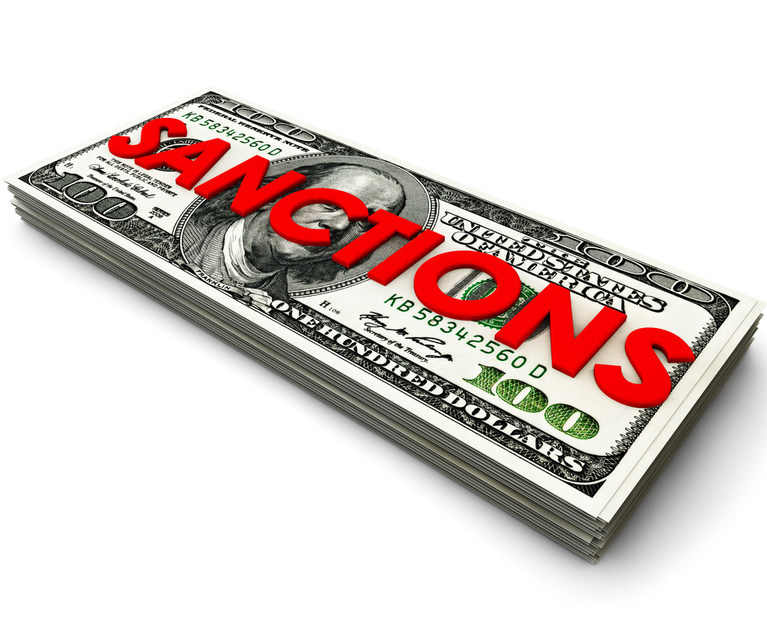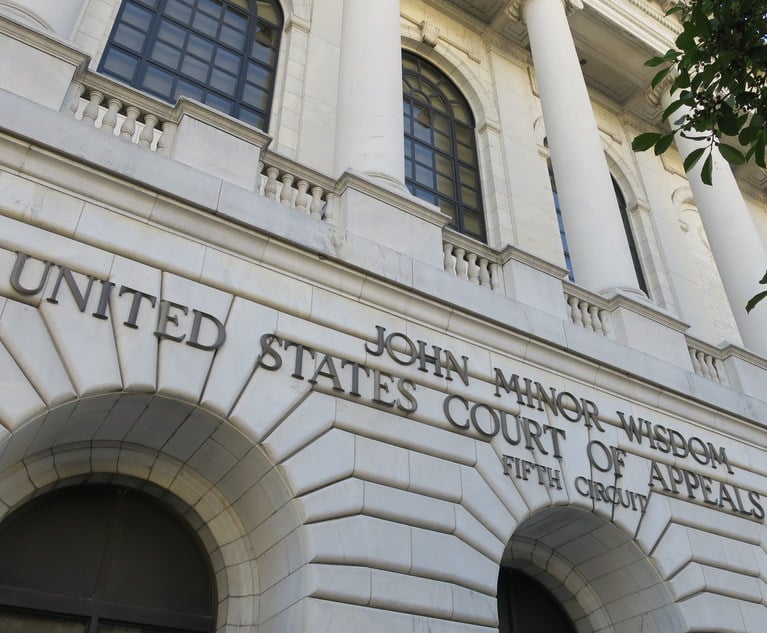 Sanctions
SanctionsGet Your Popcorn Ready: Sanctions Regulations Involving Artwork and Media Content in a Post-'Chevron' World
When many consider U.S. sanctions, they think about familiar targets like foreign banks and energy companies. But the United States has similarly used sanctions to pursue individuals and entities that operate in the creative arena, like foreign TV networks and movie studios, art collectors and movie producers. Going forward, however, U.S. regulators may find it hard to police creative industries after the Supreme Court’s decision in Loper Bright Enterprises v. Raimondo, discussed here.
November 14, 2024 at 02:25 PM
11 minute read
When many consider U.S. sanctions, they think about familiar targets: foreign banks, oligarchs, energy companies. But what people may not realize is that for years now, the United States has similarly used sanctions to pursue individuals and entities that operate in the creative space: for example, recently OFAC has sanctioned foreign TV networks and movie studios, while DOJ has indicted art collectors and movie producers.


When it comes to regulating traditional First Amendment material like TV programming, movies, or music, U.S. regulators have relied on a cramped interpretation of the governing statutes. Without the protection of Chevron deference, however, U.S. regulators are likely to have a more difficult time defending that interpretation. And that may mean more breathing room for content creators and facilitators trying to do business in an increasingly global, and fraught, market.
The Informational Materials Exemption
The primary statutory authority for the U.S. sanctions regime is the International Emergency Economic Powers Act (50 U.S.C. §§1701 et seq.) (IEEPA). IEEPA gives the president the power to restrict or prohibit a wide range of transactions involving “property in which any foreign country or a national thereof has any interest by any person, or with respect to any property, subject to the jurisdiction of the United States.” 50 U.S.C. § 1702. Once sanctions are imposed, OFAC adopts regulations to implement the sanctions and to enforce them.
In 1988, concerned by OFAC’s seizure of magazines and books and the potential harm to the free flow of ideas and information, Rep. Howard Berman sponsored what became known as the Berman Amendment to IEEPA. This provision added an “informational materials” exemption to IEEPA, denying the president (and thus OFAC) the “authority to regulate or prohibit, directly or indirectly, the importation from any country, or the exportation to any country, whether commercial or otherwise, of publications, films, posters, phonograph records, photographs, microfilms, microfiche, tapes, or other informational materials.” Pub. L. No. 100-418 §2502, 102 Stat. 1107, 1371-72.
The informational materials exemption in the Berman Amendment does not contain any carve-outs. OFAC, nevertheless, interpreted the exemption narrowly, adopting regulations that excluded “informational materials not fully created and in existence at the date of the transaction” or “intangible items, such as telecommunications transmissions.” 54 Fed. Reg. 5229-35 (Feb. 2, 1989).
In response, in 1994, Rep. Berman sponsored another amendment (the “1994 Amendment,” and with the Berman Amendment, the “IEEPA Amendments”) specifically designed to reject OFAC’s interpretation. That amendment expanded the exemption to “information,” not just “informational materials”; clarified that it included intangible information “regardless of format or medium of transmission”; expanded the illustrative list of informational materials; and explicitly noted that scope of the exemption was “not limited to” that list. Pub. L. No. 103-236, § 525, 108 Stat. 382, 474 (1994) (codified as amended at 50 U.S.C. §1702(b)(3)).
Undeterred, OFAC continues to interpret the exemption not to apply to “information or informational materials not fully created and in existence at the date of the transactions, or to the substantive or artistic alteration or enhancement of informational materials, or to the provision of marketing and business consulting services.” See, e.g., 31 C.F.R. §560.210(c)(2).
For example, on Oct. 30, 2020, OFAC issued guidance to “to highlight sanctions risks arising from dealings in high-value artwork associated with persons blocked pursuant to OFAC’s authorities.” See https://ofac.treasury.gov/media/49091/download?inline. OFAC took the position that, although the exemption specifically includes “artworks” as material outside of OFAC’s sanctions reach, it nevertheless does not “allow blocked persons or their facilitators to evade sanctions by exchanging financial assets such as cash, gold, or cryptocurrency for high-value artwork or vice versa” and, consequently, that OFAC may prohibit such transactions “to extent the artwork functions primarily as an investment asset or medium of exchange.”
NOT FOR REPRINT
© 2025 ALM Global, LLC, All Rights Reserved. Request academic re-use from www.copyright.com. All other uses, submit a request to [email protected]. For more information visit Asset & Logo Licensing.
You Might Like
View All
Legal Issues to Watch in the US Appeals Courts in 2025

For Safer Traffic Stops, Replace Paper Documents With ‘Contactless’ Tech
4 minute read
Atkins Likely to Bring Pro-Business, Light Regulatory Touch to SEC, Say Agency Observers

SEC Commissioner Uyeda Predicts Eased Crypto Enforcement Under Next Chair
Trending Stories
- 1Departing Attorneys Sue Their Former Law Firm
- 2Pa. High Court: Concrete Proof Not Needed to Weigh Grounds for Preliminary Injunction Order
- 3'Something Else Is Coming': DOGE Established, but With Limited Scope
- 4Polsinelli Picks Up Corporate Health Care Partner From Greenberg Traurig in LA
- 5Kirkland Lands in Phila., but Rate Pressure May Limit the High-Flying Firm's Growth Prospects
Who Got The Work
J. Brugh Lower of Gibbons has entered an appearance for industrial equipment supplier Devco Corporation in a pending trademark infringement lawsuit. The suit, accusing the defendant of selling knock-off Graco products, was filed Dec. 18 in New Jersey District Court by Rivkin Radler on behalf of Graco Inc. and Graco Minnesota. The case, assigned to U.S. District Judge Zahid N. Quraishi, is 3:24-cv-11294, Graco Inc. et al v. Devco Corporation.
Who Got The Work
Rebecca Maller-Stein and Kent A. Yalowitz of Arnold & Porter Kaye Scholer have entered their appearances for Hanaco Venture Capital and its executives, Lior Prosor and David Frankel, in a pending securities lawsuit. The action, filed on Dec. 24 in New York Southern District Court by Zell, Aron & Co. on behalf of Goldeneye Advisors, accuses the defendants of negligently and fraudulently managing the plaintiff's $1 million investment. The case, assigned to U.S. District Judge Vernon S. Broderick, is 1:24-cv-09918, Goldeneye Advisors, LLC v. Hanaco Venture Capital, Ltd. et al.
Who Got The Work
Attorneys from A&O Shearman has stepped in as defense counsel for Toronto-Dominion Bank and other defendants in a pending securities class action. The suit, filed Dec. 11 in New York Southern District Court by Bleichmar Fonti & Auld, accuses the defendants of concealing the bank's 'pervasive' deficiencies in regards to its compliance with the Bank Secrecy Act and the quality of its anti-money laundering controls. The case, assigned to U.S. District Judge Arun Subramanian, is 1:24-cv-09445, Gonzalez v. The Toronto-Dominion Bank et al.
Who Got The Work
Crown Castle International, a Pennsylvania company providing shared communications infrastructure, has turned to Luke D. Wolf of Gordon Rees Scully Mansukhani to fend off a pending breach-of-contract lawsuit. The court action, filed Nov. 25 in Michigan Eastern District Court by Hooper Hathaway PC on behalf of The Town Residences LLC, accuses Crown Castle of failing to transfer approximately $30,000 in utility payments from T-Mobile in breach of a roof-top lease and assignment agreement. The case, assigned to U.S. District Judge Susan K. Declercq, is 2:24-cv-13131, The Town Residences LLC v. T-Mobile US, Inc. et al.
Who Got The Work
Wilfred P. Coronato and Daniel M. Schwartz of McCarter & English have stepped in as defense counsel to Electrolux Home Products Inc. in a pending product liability lawsuit. The court action, filed Nov. 26 in New York Eastern District Court by Poulos Lopiccolo PC and Nagel Rice LLP on behalf of David Stern, alleges that the defendant's refrigerators’ drawers and shelving repeatedly break and fall apart within months after purchase. The case, assigned to U.S. District Judge Joan M. Azrack, is 2:24-cv-08204, Stern v. Electrolux Home Products, Inc.
Featured Firms
Law Offices of Gary Martin Hays & Associates, P.C.
(470) 294-1674
Law Offices of Mark E. Salomone
(857) 444-6468
Smith & Hassler
(713) 739-1250






